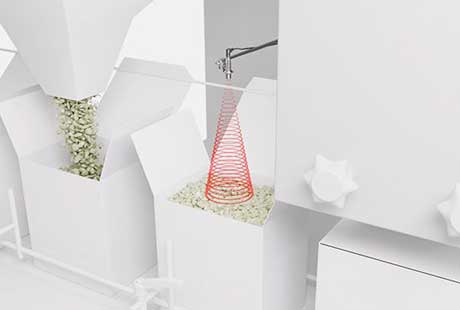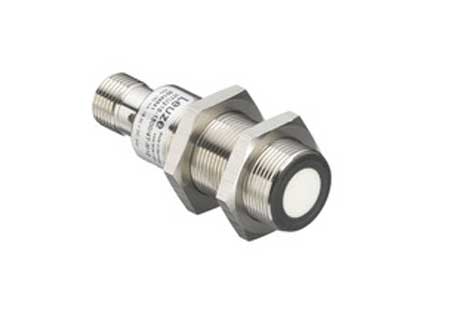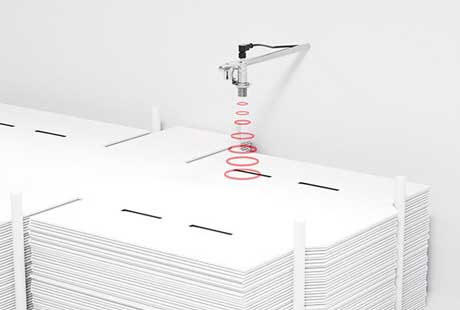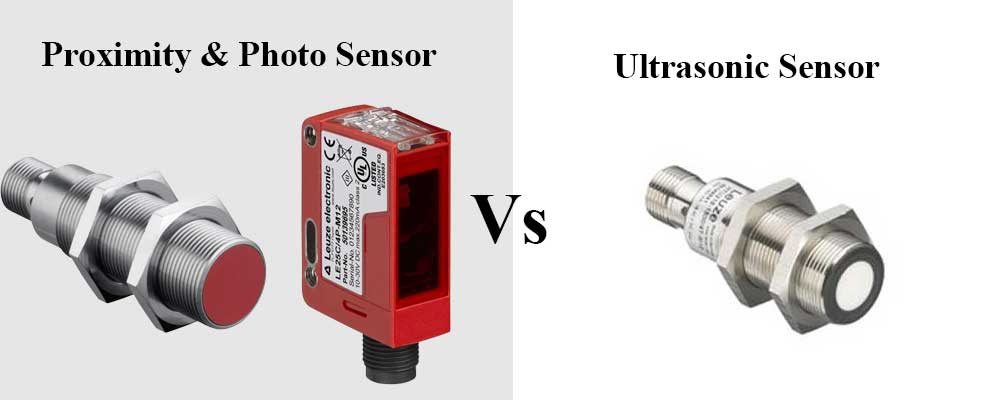Where Ultrasonic Sensor is Used?
Have you ever considered the invisible yet crucial role ultrasonic sensors play in our industrial world?
In this blog, we’re going to dive into the fascinating world of ultrasonic sensors, exploring their workings, applications, and the future trends shaping their evolution.
From the precision in manufacturing to the intricacies of environmental monitoring, we’ll uncover how these sensors are integral to various industrial sectors.
In this blog, we’re going to dive into the fascinating world of ultrasonic sensors, exploring their workings, applications, and the future trends shaping their evolution. From the precision in manufacturing to the intricacies of environmental monitoring, we’ll uncover how these sensors are integral to various industrial sectors.
Whether you’re an industrial engineer or simply intrigued by technological advancements, this journey will enhance your understanding of ultrasonic sensors and their indispensable role in modern engineering.
By the end of this read, you’ll have a comprehensive grasp of where and why these sensors are used, along with insights into the challenges they face and the innovations driving their future.
Table of Contents:
- Introduction
- What is an Ultrasonic Sensor and How Does It Work?
- Industrial Applications of Ultrasonic Sensors
- Ultrasonic Sensors in Distance Measurement
- Ultrasonic Level Sensors in Fluid Control
- Advanced Applications: IoT and Beyond
- Ultrasonic Sensors in Robotics and Automation
- Ultrasonic Sensors in Proximity Detection and Safety
- Choosing the Right Ultrasonic Sensor for Specific Applications
- Ultrasonic Sensors in Environmental Monitoring
- Challenges and Future Trends in Ultrasonic Sensor Technology
- Conclusion
What is an Ultrasonic Sensor and How Does It Work?
Imagine a device that can ‘see’ objects and measure distances without ever touching them. This is what an ultrasonic sensor does in the world of industrial engineering.
Interested?
Let’s explore how these sensors work.
An ultrasonic sensor is like a sophisticated ear that listens for high-frequency sound waves. These are sound waves that are too high-pitched for us to hear. The sensor sends out these waves, and when they hit something, they bounce back as echoes.
Now, the clever part is how the sensor uses these echoes. It measures the time they take to come back – this is known as the ‘time of flight’. Since we know how fast sound travels, the sensor can calculate how far away the object is. It’s a bit like timing an echo in a large hall, but much more precise.
The principle of ultrasonic sensor operation is simple yet powerful. It allows engineers to measure distances accurately, even in busy or awkward spaces where other methods might not work. So, how does this technology fit into the industrial world, and why is it so valuable?
You Make Like to Read:
Industrial Applications of Ultrasonic Sensors:
Ultrasonic sensors, known for their precision and versatility, are not just fascinating devices; they are workhorses in various industrial sectors.
Let’s explore where and how these sensors are making a difference.
One of the key ultrasonic sensors used is in distance measurement. In industries like automotive manufacturing, these sensors play a crucial role in ensuring robotic arms place parts with pinpoint accuracy. This precision is vital for maintaining high-quality standards in production lines.
In the world of material handling and logistics, the application of ultrasonic sensors is equally significant. They are used to monitor the level of materials in bins and containers, aiding in efficient inventory management. This capability is essential in preventing overflows or shortages and ensuring smooth operations in warehouses and storage facilities.
Process control in industries such as chemical manufacturing and food processing also relies heavily on ultrasonic sensors. They are used for non-invasive fluid level monitoring in tanks and pipes. This non-contact measurement method is particularly beneficial when dealing with hazardous or sanitary-sensitive materials.
For those looking for advanced ultrasonic sensor solutions, Leuze Ultrasonic Sensors offer a range of products tailored to meet these industrial needs. Their sensors are designed to provide accuracy, efficiency, and reliability in various applications, making them a top choice for industrial engineers.
The applications of ultrasonic sensors in the industry are diverse and impactful. From precision in manufacturing to efficiency in logistics, and safety in automated processes, these sensors are indispensable tools. Their ability to accurately sense and measure, even in challenging conditions, makes them a key component in the industrial sector.
Ultrasonic Sensors in Distance Measurement:
In the industrial world, ultrasonic sensors are important when it comes to precise distance measurement.
Let’s focus on how these ultrasonic sensors excel in this specific function.
Ultrasonic distance sensors are all about measuring how far away an object is. They do this by emitting sound waves at a frequency beyond human hearing. When these waves hit an object, they bounce back to the sensor. The sensor then calculates the distance based on the time it takes for these echoes to return. This process is known as ultrasonic sensor distance measurement.
Here’s a more detailed explanation for each application where ultrasonic sensors are particularly advantageous:
Liquid Level Measurement in Non-Transparent Containers: Ultrasonic sensors excel in measuring liquid levels inside opaque containers where visual inspection isn’t possible. They emit sound waves that reflect off the liquid surface, allowing for accurate level detection without contamination risk. This is crucial in industries like food processing or chemicals, where safety and purity are paramount.
Distance Measurement in Harsh Environmental Conditions: In environments laden with dust, smoke, or fog, ultrasonic sensors stand out. Their sound waves penetrate these conditions, providing reliable measurements where optical sensors would fail. This makes them ideal for outdoor applications, like construction sites or environmental monitoring, where visibility is often compromised.
Applications Requiring Non-Contact Measurement: For measuring distances or detecting objects in environments where contact is hazardous – such as with hot, corrosive, or sanitary-sensitive materials – ultrasonic sensors are the go-to solution. They can safely measure without touching the object, crucial in sectors like metal processing or pharmaceuticals.
Irregularly Shaped Object Detection: Ultrasonic sensors are adept at detecting objects with complex geometries or uneven surfaces. Unlike some sensors that require a flat, reflective surface, ultrasonic waves can bounce off irregular shapes, ensuring accurate detection in applications like material handling or packaging.
Soft Material Detection: Detecting soft or sound-absorbent materials can be challenging for certain sensors. Ultrasonic sensors, however, can effectively measure distances or detect objects made of foam or other soft materials, useful in industries like automotive manufacturing or furniture production.
Large Area Coverage for Object Detection: Ultrasonic sensors can cover larger areas compared to some proximity sensors. This feature is valuable in applications like room occupancy monitoring or large-scale bin-level detection in warehouses, where a wide coverage area is essential for efficient operation.
Each of these applications showcases the unique strengths of ultrasonic sensors, making them indispensable in specific industrial scenarios.
Ultrasonic Level Sensors in Fluid Control:
Ultrasonic sensors offer a non-contact method to monitor and control fluid levels, making them ideal for various industries.
Let’s explore how they work and where they’re used.
Ultrasonic level sensors operate by sending sound waves down to the surface of a fluid. These waves then bounce back to the sensor, which calculates the fluid level based on the time it takes for the echoes to return. This method, known as ultrasonic level measurement, is highly accurate and reliable.
In the water treatment industry, these sensors are crucial for monitoring water levels in tanks and reservoirs. They help in maintaining optimal levels, ensuring efficient treatment processes. This is vital for both the effectiveness of the treatment and the conservation of resources.
In the chemical processing sector, ultrasonic-level sensors play a significant role in ensuring the safety and efficiency of operations. They are used to monitor the levels of various chemicals in tanks, preventing overfills and spills, which can be hazardous.
The oil and gas industry also relies heavily on these sensors. They are used in storage tanks to measure the levels of oil or gas, aiding in inventory management and safety. The non-contact nature of ultrasonic sensors is particularly beneficial in this industry, where contact with the materials being measured can be dangerous.
Ultrasonic level sensors are an essential tool in industries like water treatment, chemical processing, and oil and gas. Their ability to accurately measure fluid levels without making physical contact makes them a preferred choice for fluid control in these sectors. Their use ensures safety, efficiency, and precision in critical industrial processes.
Advanced Applications: IoT and Beyond:
Ultrasonic sensors are stepping into the future, particularly in the world of IoT (Internet of Things), revolutionizing how industries operate.
Let’s delve into how these sensors are becoming a part of IoT solutions and what future advancements we might expect.
In the IoT world, ultrasonic sensors play a crucial role in gathering precise data. They are used in various smart devices and systems to measure distances, detect objects, and even monitor fluid levels. This data is then transmitted to other IoT devices or central systems for analysis, enabling automated decision-making and enhanced process control.
For instance, in smart agriculture, ultrasonic sensors are used to monitor soil moisture or water levels in tanks, providing data that can be used to automate irrigation systems. This not only optimizes water usage but also boosts crop yield.
In smart cities, these sensors contribute to efficient waste management. They can measure the level of waste in bins and signal when they need to be emptied. This leads to more efficient waste collection routes and schedules, reducing costs and environmental impact.
Looking ahead, the future of ultrasonic sensors in IoT is bright. We can expect to see more innovations, such as enhanced sensor accuracy and integration with AI technologies. These advancements will open up new possibilities, like more sophisticated environmental monitoring and even more efficient industrial automation.
Ultrasonic sensors are becoming an integral part of IoT solutions, offering precise data collection for smarter decision-making. As we look to the future, the potential for further innovations in ultrasonic sensor technology is vast, promising even greater impacts across various industries.
Ultrasonic Sensors in Robotics and Automation:
In the dynamic field of robotics and automation, ultrasonic sensors are playing an increasingly pivotal role.
Let’s explore how these sensors are enhancing efficiency and precision in automated systems.
Navigation in Complex Robotic Environments:
Limitation of Proximity/Photoelectric Sensors: These sensors might not provide accurate navigation in environments with variable lighting, dust, or smoke, which can be common in robotic applications.
Ultrasonic Sensor Advantage: Ultrasonic sensors offer reliable navigation for robots by accurately detecting obstacles and mapping environments, unaffected by visual impediments.
Robotic Interaction with Diverse Materials:
Limitation of Proximity/Photoelectric Sensors: They may struggle to detect certain materials, especially if they are transparent, highly reflective, or have irregular shapes.
Ultrasonic Sensor Advantage: Ultrasonic sensors can detect a wide range of materials, making them ideal for robots that need to interact with diverse objects, ensuring efficient operation in tasks like sorting or assembly.
Safety in Automated Robotic Systems:
Limitation of Proximity/Photoelectric Sensors: In safety-critical applications, these sensors might not provide enough range or coverage to prevent collisions or accidents effectively.
Ultrasonic Sensor Advantage: With their broader range and ability to detect objects at a distance, ultrasonic sensors enhance the safety of robotic systems, especially in automated factories or warehouses.
Precision in Robotic Distance Measurement:
Limitation of Proximity/Photoelectric Sensors: These sensors can be less effective in applications requiring precise distance measurements over varying surfaces.
Ultrasonic Sensor Advantage: Ultrasonic sensors provide high precision in distance measurement, crucial for robots performing tasks that require exact positioning, like in welding or material handling.
Robotic Applications in Challenging Conditions:
Limitation of Proximity/Photoelectric Sensors: Their performance can be compromised in harsh industrial environments with interference from other electronic devices.
Ultrasonic Sensor Advantage: Ultrasonic sensors maintain consistent performance in challenging conditions, making them suitable for robots operating in industrial settings with high levels of electronic noise or interference.
Ultrasonic Sensors in Proximity Detection and Safety:
Ultrasonic sensors play a crucial role in proximity detection and safety, particularly in industrial settings.
Let’s explore how these sensors contribute to creating safer work environments.
Ultrasonic proximity sensors are adept at detecting objects or individuals in their vicinity without any physical contact. They emit high-frequency sound waves and measure the time taken for these waves to bounce back after hitting an object. This capability is essential for various safety applications.
One common use is in automated machinery, where ultrasonic sensors help prevent accidents. They can detect if a person or an object is too close to the machinery and can trigger an automatic shutdown to avoid potential harm. This feature is especially important in areas with high human-machine interaction.
Another example is in vehicle safety systems. Ultrasonic sensors are used in large industrial vehicles, like forklifts, to detect obstacles or personnel in blind spots. They provide drivers with crucial distance measurements, helping to prevent collisions in busy industrial environments.
Ultrasonic motion sensors also find applications in security systems. They can detect unauthorized movement in restricted areas, triggering alarms or other security measures. This is particularly useful in safeguarding sensitive areas in industrial facilities.
Ultrasonic sensors are vital in proximity detection and enhancing safety in industrial settings. Their ability to accurately detect objects and movements without physical contact makes them an indispensable tool in preventing accidents and ensuring the safety of both personnel and equipment.
Choosing the Right Ultrasonic Sensor for Specific Applications:
Selecting the appropriate ultrasonic sensor for a particular application is a critical decision in industrial engineering.
Let’s discuss some practical tips to ensure you choose the right sensor for your needs.
Understand the Application: The first step in selecting an ultrasonic sensor is to clearly define its purpose. Are you using it for distance measurement, object detection, or level monitoring? The application will dictate the type of sensor you need.
Consider the Range: Ultrasonic sensors come with different range capabilities. It’s essential to choose a sensor whose range matches your application’s requirements. For instance, a sensor with a short range might be suitable for a small machine, but for larger industrial applications, you’ll need a sensor with a longer range.
Evaluate Frequency Requirements: The frequency of the ultrasonic sensor affects its resolution and detection capabilities. Higher frequencies are better for detecting small objects and providing higher resolution, but they have shorter ranges. Lower frequencies can detect objects over longer distances but might not be as effective for small objects.
Assess Environmental Factors: Ultrasonic sensors can be affected by environmental conditions like temperature, humidity, and air turbulence. Consider the operating environment of the sensor and choose one that can withstand the specific conditions it will encounter.
Application-Specific Sensors: Some ultrasonic sensors are designed for specific applications. For example, sensors used in outdoor environments are typically more robust and weather-resistant than those used in controlled indoor environments.
Sensor Selection Criteria: When choosing a sensor, also consider factors like the size of the sensor, its mounting options, and the type of output it provides. Ensure that the sensor you select can be easily integrated into your existing system.
Selecting the right ultrasonic sensor involves understanding your specific application requirements and considering factors such as range, frequency, and environmental conditions. By carefully evaluating these aspects, you can ensure that you choose a sensor that meets your needs and enhances the efficiency and safety of your industrial applications.
Ultrasonic Sensors in Environmental Monitoring:
Ultrasonic sensors play a significant role in environmental monitoring, a field increasingly important in today’s world.
Let’s explore how these sensors contribute to monitoring and protecting our environment.
Ultrasonic sensors are used extensively in measuring water levels, which is crucial in environmental monitoring. For instance, they are deployed in rivers, lakes, and reservoirs to monitor water levels, helping predict and manage flood situations. This data is vital for early warning systems, allowing communities and authorities to take proactive measures against potential flooding.
Another critical application is in monitoring the levels of various substances in environmental cleanup projects. Ultrasonic level sensors can measure the levels of contaminants or treatment chemicals in tanks or natural bodies of water, providing essential data for effective environmental management.
In weather monitoring systems, ultrasonic sensors are used to measure parameters like wind speed and direction. This information is crucial for understanding weather patterns and making accurate forecasts, which are essential for agriculture, shipping, and general public safety.
Moreover, these sensors are used in air quality monitoring equipment. They can help in assessing the concentration of various pollutants in the atmosphere, contributing to studies on air quality and helping to devise strategies to reduce pollution levels.
Ultrasonic sensors are invaluable in environmental monitoring. Their ability to provide accurate and reliable data in various environmental conditions makes them a key tool in efforts to protect and manage our natural surroundings. Their use spans from water level monitoring to air quality assessment, playing a crucial role in safeguarding the environment.
Challenges and Future Trends in Ultrasonic Sensor Technology:
Ultrasonic sensors, while widely used in various industries, do face certain challenges. Understanding these challenges is key to advancing the technology.
Let’s also look at the future trends that are shaping the evolution of ultrasonic sensors.
Challenges of Ultrasonic Sensors:
Environmental Interference: One of the main challenges is the sensor’s performance in extreme environmental conditions. Factors like high humidity, temperature variations, and air turbulence can affect the accuracy of ultrasonic sensors.
Material Limitations: Certain materials that absorb sound waves or have uneven surfaces can pose difficulties for ultrasonic sensors, leading to less reliable readings.
Range Limitations: Ultrasonic sensors have a limited range, which restricts their use in applications requiring long-distance measurements.
Despite these challenges, the future of ultrasonic sensors looks promising with several advancements on the horizon.
Future of Ultrasonic Sensors:
Integration with AI and IoT: A significant trend is the integration of ultrasonic sensors with AI and IoT technologies. This integration will enable smarter data analysis and decision-making, enhancing the sensors’ applications in automation and monitoring systems.
Miniaturization and Enhanced Precision: Ongoing research is focusing on making ultrasonic sensors smaller and more precise. This miniaturization will allow for their use in more compact and intricate systems, broadening their application scope.
Improved Material and Design Innovations: Future advancements include the development of sensors that can work more effectively with a wider range of materials and under varied environmental conditions. This will overcome many of the current limitations.
While ultrasonic sensors face challenges like environmental interference and material limitations, the advancements in technology are opening new doors. The future trends in ultrasonic sensor technology, such as AI integration and miniaturization, are set to enhance their capabilities, making them even more versatile and essential in industrial engineering.
Conclusion:
As we wrap up our exploration of ultrasonic sensors, think about the journey we’ve taken through their world. We started with a basic understanding of what these sensors are and how they function, delving into their ability to ‘see’ without touching. We then navigated through their diverse industrial applications, from ensuring precision in robotics to aiding in efficient environmental monitoring.
Along the way, we tackled the challenges these sensors face and peeked into the future, seeing how advancements like AI integration and miniaturization are set to broaden their capabilities. Now, you’re equipped with a deeper understanding of ultrasonic sensors – their importance in various applications, the challenges they overcome, and the exciting future that lies ahead.
This knowledge is not just theoretical; it’s a window into the evolving landscape of industrial engineering, where ultrasonic sensors continue to play a pivotal role.




